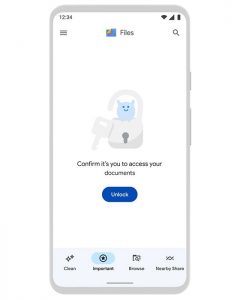Imagine you’ve joined a relay team and are about to run a race. Halfway through your first lap, your manager calls you away to handle a different task. You complete the assignment and return to the race. By the time you reach the handoff point, however, your teammate has been called away for a different task. You’re ready to hand off the baton, but you have no idea when or if your team will continue the race.
This is a common problem in project management. Dependent tasks don’t perfectly sync up, and time ticks away as team members get called off to do other assignments that seem more important. It’s no wonder many leaders struggle to improve cross-functional collaboration.
The Need for Collaborative Leaders
Projects without effective leadership are doomed to fail — and at a spectacular rate. An estimated 67% of well-formulated strategies crumble due to poor execution. So many organizations fail because they don’t set executable strategies and don’t have management teams capable of running a portfolio of projects.
The biggest challenge isn’t the team members; it’s the functional leaders who steer the ship. These leaders have their own goals that feed up the management chain, and there is often misalignment.
Collaborative leaders — also known as accidental leaders or accidental managers — face challenges when leading people who aren’t their direct reports. It’s a challenge to manage without authority.
In these situations, the typical org chart requires employees to report to managers who have their own sets of different (and sometimes conflicting) priorities. Accidental leaders have to figure out how to influence without the authority to do so. It begs the question: Can a leader have power without authority?
How Has the Workplace Changed?
Cross-functional collaboration wasn’t always a problem. Before the late 20th century, managers led autonomous teams that rarely overlapped. As technology continued to evolve, IT departments were one of the first groups that had to touch nearly every department. This understanding that business processes often cross functions and affect one another — deemed “total quality management” — really took root in the late 1980s.
Today’s workplace lends itself to cross-functional collaboration. Sales affects marketing, and manufacturing affects business development. Innovation is critical, but new projects result in cross-sectional teams that have their own metrics, deadlines, and goals.
Designated leaders find themselves in the awkward spot of having to manage without authority, which can make it difficult to get anything accomplished. In other words, the relay team finishes in last place.
How to Influence Without Authority
So what are collaborative leaders to do? How can they improve cross-functional collaboration when they have no authority? They choose different strategies and implement specific skills that aren’t based on authority. No employee wants to be led with authority. Team members don’t want to be treated like children — they want direction, respect, guidance, and mentoring. They want coaches and ongoing relationships.
Employees want cross-functional collaboration with clear direction toward a meaningful goal. Collaborative leaders can learn how to influence without authority to lead their teams toward their goals effectively. Here is how to be a leader at work:
1. Create achievable and meaningful goals.
Achieving goals effectively as a team comes down to the goals themselves. An impossible goal leads to a demoralized team, so set the bar lower and encourage your team to exceed expectations. If the goal is both meaningful and achievable, the team will get behind the value of the project.
As a leader, you should sell the value of the goal at every opportunity. When obstacles occur — and they always do — nobody will feel discouraged. When team members feel a sense of attachment to the project, they will protect it at all costs and rally together toward success.
2. Train to be a carpenter.
Even accidental leaders need the right skills and tools — just like carpenters. If you’re going to be a project leader, you need project leadership skills and tools. Learn how to influence people and negotiate as necessary, selling the project and coaching employees through their tasks. Learn how to lead your team members through the entire project management process.
3. Show up as an empowered adult.
Act like a leader. When you must influence without authority, this step is critical. Nobody wants to follow a manager who whines and complains, and nobody wants to follow a dictator.
Show up as an empowered adult who takes responsibility for your actions rather than blaming others and pointing fingers. Take accountability, stay calm in any crisis, and show appreciation to your team members — it’s far more effective than criticism.
4. Build partnerships.
Relationships of the past were centered on a win-lose approach: “I’m the boss. You do what I say, and I win.”
Collaborative leadership focuses on win-win scenarios. You’re not a bully or a dictator — you’re a collaborative leader. Find a creative solution that allows both you and your team members to feel good while working toward a common goal, focusing on equality and mutual respect.
Managing without authority can be the most important leadership skill you showcase. Set achievable goals, show that you are a team player, and empower everyone who is part of a project. This is the key to successful cross-functional collaboration.
If you want more information about collaborative leadership, download my free e-book, “Matrix Management Reinvented: The New Game in Town.”
Business & Finance Articles on Business 2 Community
(26)
Report Post



